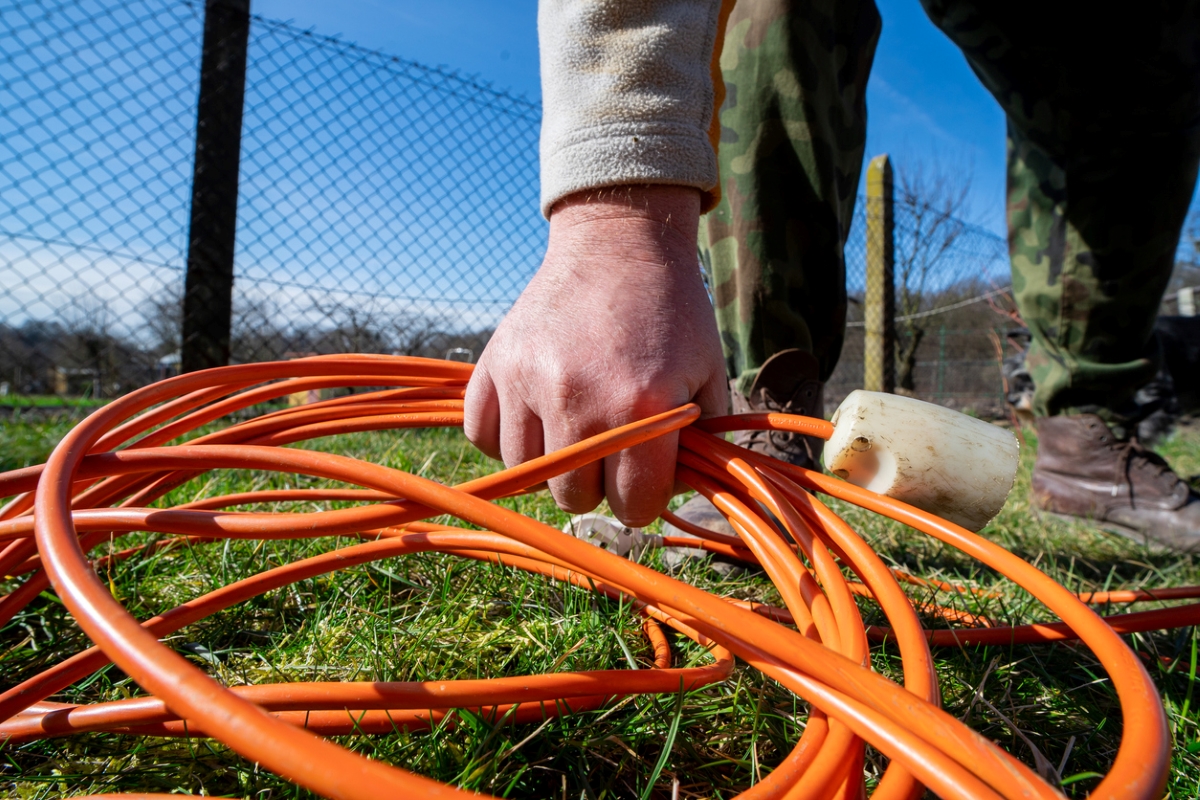

We may earn revenue from the products available on this page and participate in affiliate programs. Learn More ›
Keeping a workspace organized and free of clutter, regardless of the project, improves the overall safety conditions and increases your efficiency. However, many home workshops and office spaces have coils of hastily hidden extension cords and power strips that make for prime trip hazards, in addition to posing other safety concerns and just looking unsightly.
When it comes to extension cord safety, wrapping your cables and putting them in the proper indoor storage spaces is a must. Not only does it remove potential trip hazards, it also forces you to check whether or not an extension cord is unplugged and whether it has nicks, frays, or other damage. Using a damaged extension cord dramatically increases the risk of starting a fire, according to the US Consumer Product Safety Commission.
Beyond safety, the aesthetic impacts of property organized cords is like the cherry on-top. At the end of the day, learning how to roll up an extension cord by using one of the four methods outlined below is an easy way to make your space cleaner, safer, and more enjoyable.
Braid Wrap
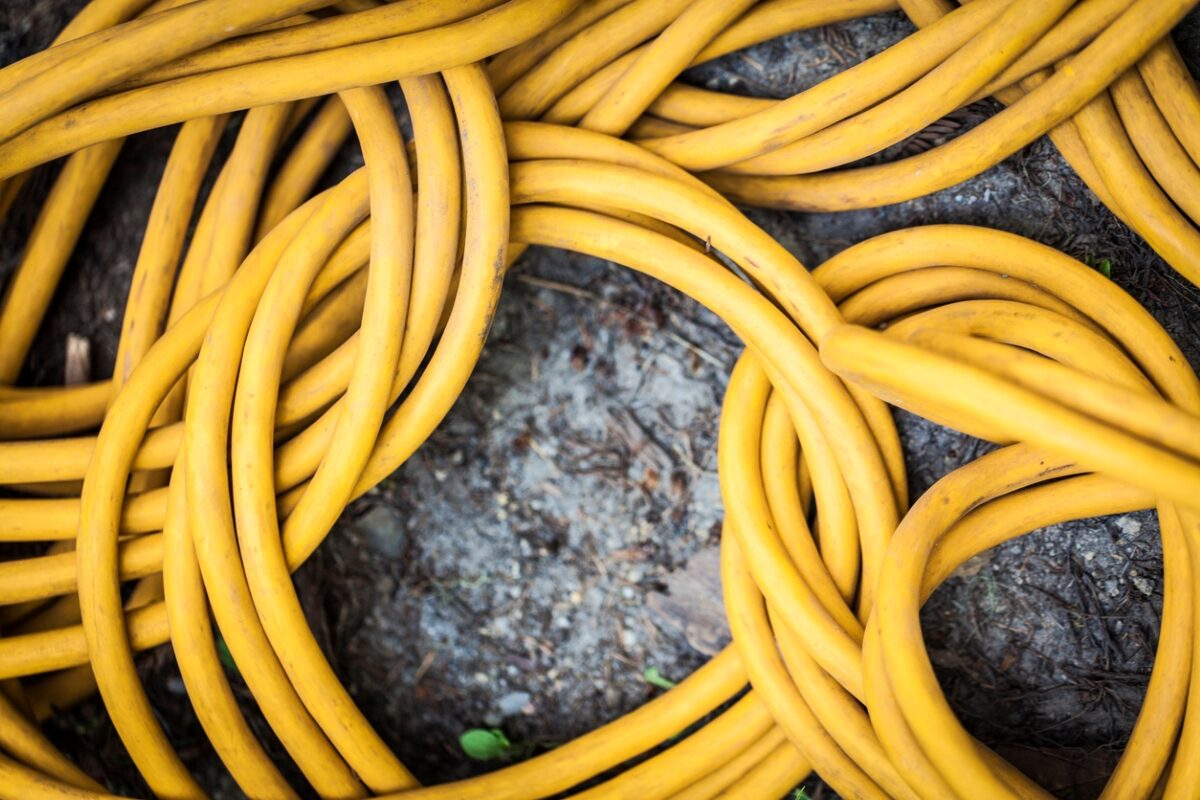
Also known as the contractor wrap or the chain-link wrap, the braid wrap is often the preferred method of construction and craft professionals because it doesn’t require any extra tools and it leaves the cord ready for use. You can unwrap it in sections, which means you don’t have to go through the hassle of rolling the whole thing back up if you have an extra-long extension cord.
Although there’s a slight learning curve when it comes to the braid wrap, it is frequently the best way to roll up extension cords because it increases the lifespan of your cord and leaves the cord in an ideal position for storage, whether that be sitting in a drawer, hanging on the wall, or tucked inside a cabinet. In short, the braid wrap is functional and versatile and makes it safer to store, all while looking pretty fancy.
STEP 1: Plug the male end of the cord into the female end.
Once you’ve removed any tangles and knots in the cord, one way to get the process started is by plugging the extension cord into itself. Doing this keeps the prongs protected from any unwanted contact during the wrapping process or while in storage, which is especially important if you work in a shop with flammable materials. Plugging the pronged male end into the female end of the cord cuts the length in half, which is crucial for the next step in the process.
STEP 2: Make a loose loop at the opposite end with an overhand knot.
After you connect the two ends of the extension cord together, work your way towards the end opposite the plugs, straightening the cord as you move along. Once you get within 6 to 8 inches of the opposite end, grasp the cords together to create a small closed loop. Using your other hand, simply reach through the loop you just created, and pull both cords back through the loop at the same time.
STEP 3: Continually repeat the loop-and-grasp process.
Now that you’ve made your first loop, continue doing so back towards the end of the extension cord with the plugs. Each loop involves repeating the process from Step 2. Once you’ve made the first loop-and-grasp movement, you should have a second loop through which you can reach and pull the cords.
Make sure that you keep your grasp at the base of the loop for each repetition. If you don’t, you’ll end up with a loose braid that won’t hold its integrity. Once you’ve looped your way back to within 1 foot of the male and female plugs, stop making new braids.
STEP 4: Slip the joined male and female plugs back through the last braid.
This is the last step before you get a fully braided extension cord. Simply take both plugs in one hand and the base of the final braid in the other, and pull the plugs backwards, through the loop of the final braid. Finally, pull the plugs in the reverse direction to tighten the entire braid. Make sure that you don’t accidently pull them back through the braid you just pushed them through during the tightening process.
Elbow Wrap
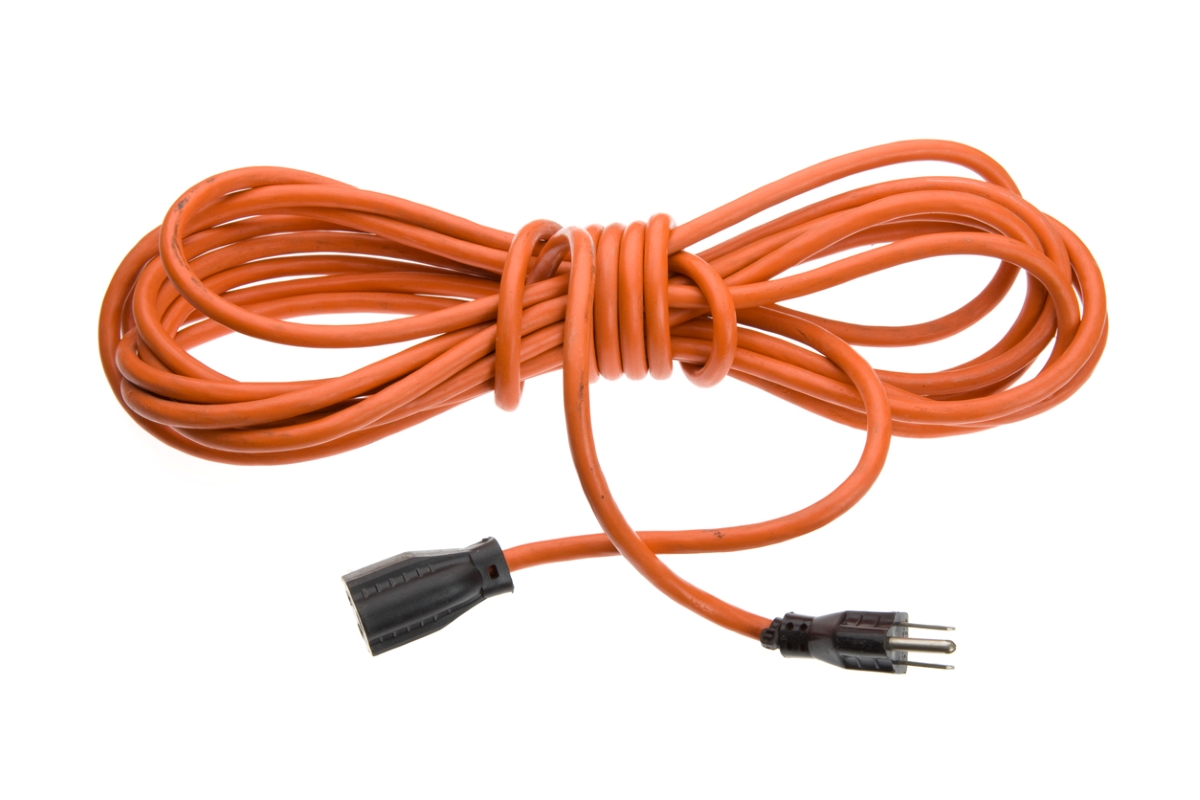
The elbow wrap is the quick-and-dirty method of keeping your extension cords and cables organized. However, that’s not to say it’s a bad way to manage cords. While the elbow wrap method doesn’t have the structural durability of the braid or over-under loops, it’s the fastest method of the three manual options. It’s also the easiest to learn. Make sure you don’t tighten it too much when you use the elbow wrap method to avoid forcing new defects into the cord by accident.
STEP 1: Hold one end of the cord in the crook between your thumb and forefinger.
First, you need to get a good grip on one end of the extension cord. Pinch the cord in the crook of your thumb and forefinger and pull it back until the plug is lightly pushing against your fingers, which will act as a “wall” for the plug to rest against. This will keep the plug from slipping in the process, which also lets you roll up the cord faster.
STEP 2: Begin wrapping the cord around your elbow and back between your fingers.
After having a firm hand on the cord, it’s time to wrap the cord. Following the path between thumb and forefinger, continue to loosely wrap the extension cord between your thumb and forefinger until you reach the end of the cord.
STEP 3: Connect the male and female ends.
The final step of the elbow wrap is to wrap the remaining foot or so of both plug ends around the middle of the wrap, perpendicular to the direction of the wrap. Then, pull them away from each other so the middle of the wrap becomes tight. Finally, connect the male and female ends together before storing.
Over-Under Wrap
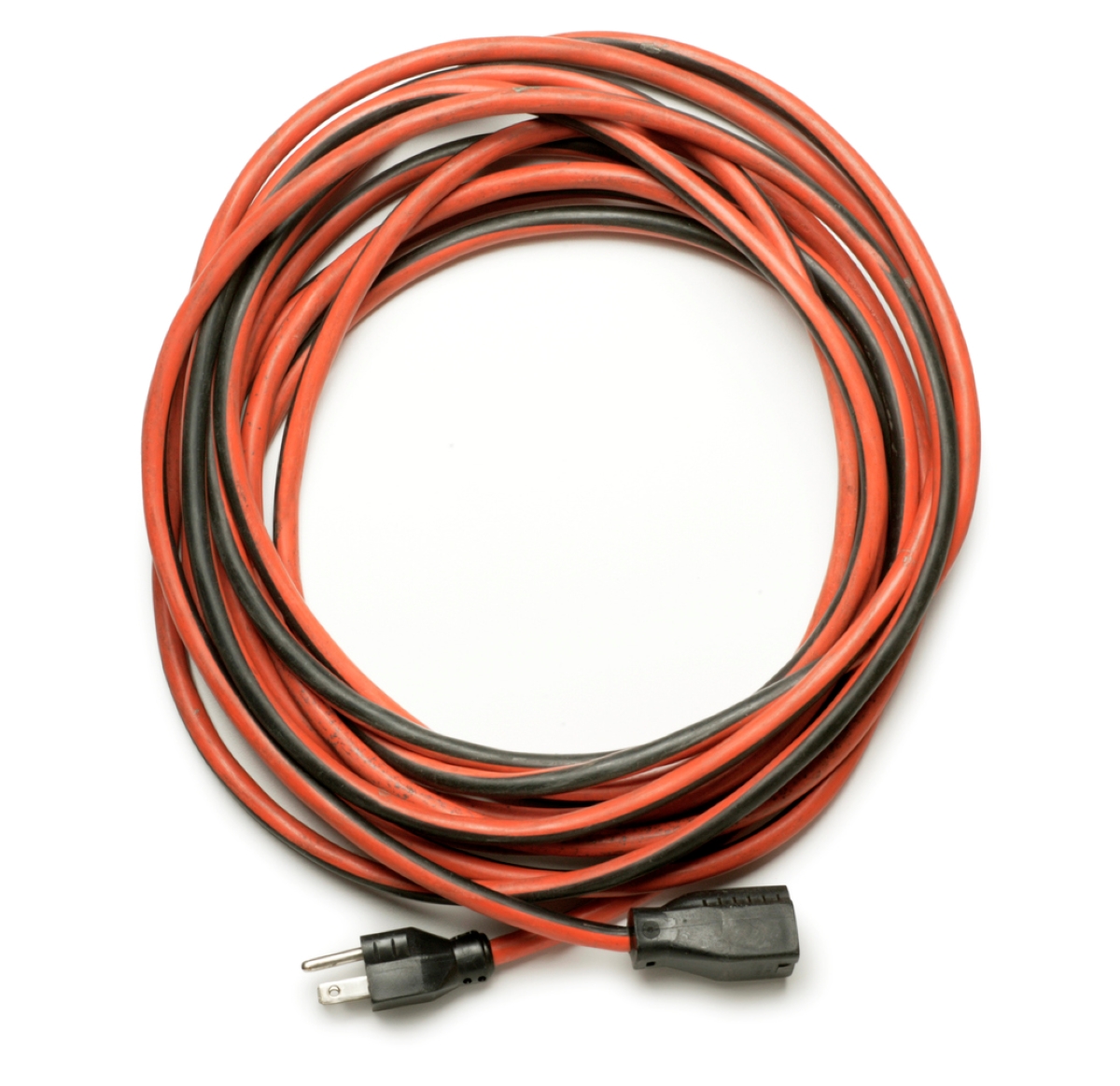
The over-under method is an intuitive and popular way to coil extension cord that strikes a good balance between the convenience of a simple elbow wrap and the longevity and durability of the braid wrap. For many, this is the best way to wrap extension cords because it doesn’t have a steep learning curve, and can easily be enhanced by simply adding inexpensive velcro cable ties like this highly rated option available at Amazon or a variety of other affordable cable management accessories.
STEP 1: Make a single overhand loop at either end of the cable.
If this is your first foray into the over-under wrap, you might want to lay your extension cord out on a flat surface to make the process a bit easier. Within a few practice rounds you’ll be able to do it freehand without a problem. Another tip you want to consider if your extension cord is new and relatively stiff is to try laying your cord in the sun or a warm space to get it to relax a bit.
Regardless of whether you take it in your hand or do it on a table, the first step involves making a circle by curving the end of the cable back onto itself and then holding the overlap. Either clockwise or counterclockwise is fine.
STEP 2: Flip the cable’s orientation to create a second underhand loop.
Repeat the same process as the first, but make an underhand loop this time. This pattern of repetition is the origin of the name “over-under wrap.” To make the underhand loop, grasp the cable at the end of the first overhand loop in one hand, and use the other hand to grasp the cord behind the first hand and then gently roll it forward under the first hand to create the loop.
STEP 3: Continue alternating between overhand and underhand loops until you reach the end of the cord.
Once you’ve created the first set of over- and under-hand loops, you’ll probably notice that it doesn’t take too long to get used to the twisting motion used in the underhand loop. Thankfully, extension cords are designed in a way that naturally accepts this method of wrapping, which makes it fairly easy to tell if you’re making the under-handed loops properly. By the time you reach the end of the cord, you can finish it off by plugging the male and female ends into each other or by securing them with a tie.
Extension Cord Reel
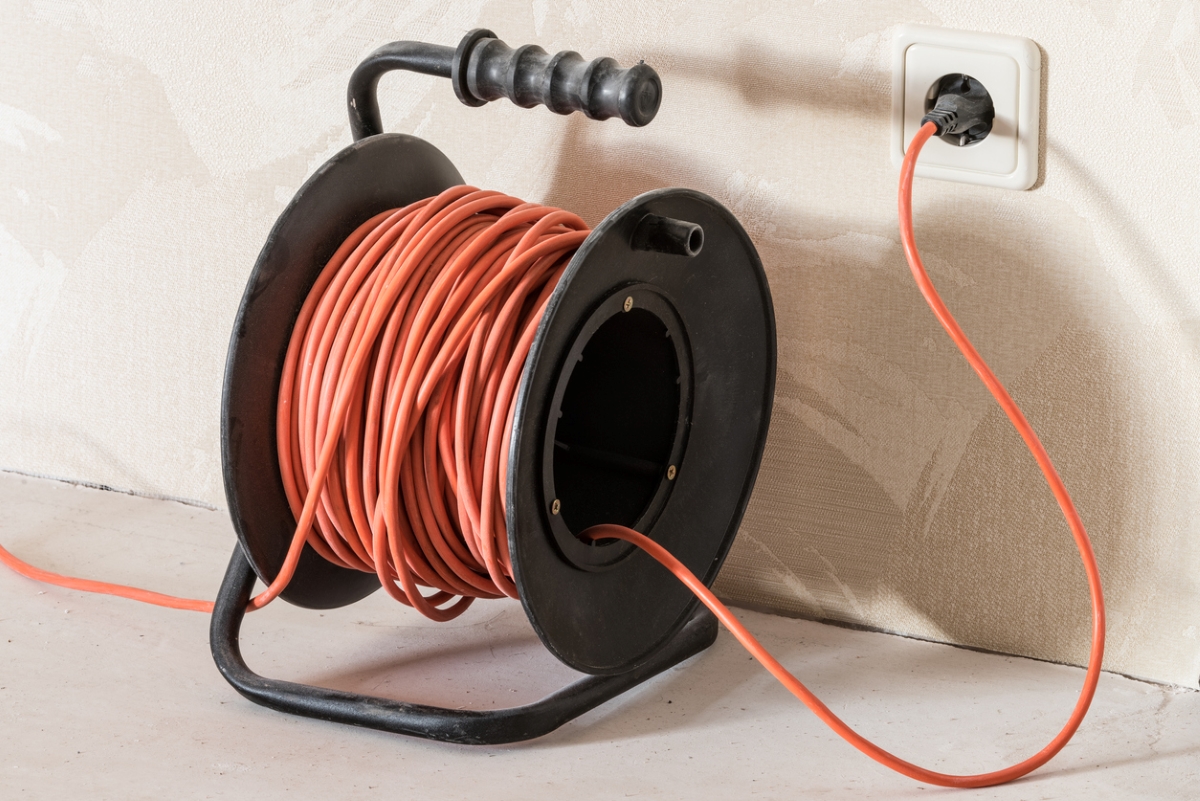
Although reels can be costly, and they can cause more hassles than solutions if poorly made, there are some that standout from the crowd in terms of durability and functionality. When done right, using an extension cord reel can save even more time than standard manual coiling methods.
Reels are best suited for heavy-duty extension cords that are longer than 50 feet, because these are a pain to manage and they become increasingly difficult to control as you become naturally fatigued when trying to wrap them. Furthermore, if you regularly use and transport extension cords, you may want to consider a reel with high-tech features such as auto-retraction or built-in USB ports for jobsite charging. Keep in mind that these features may compromise the reel’s outdoor versatility, however.
Our Recommendation: Masterplug Power At Work on Amazon for $133.49
This Masterplug extension cord reel comes with a 100-foot-long cord and four outlets that are grounded to the reel for powering tools on the jobsite.
Final Thoughts
Once you know how to wrap extension cords, you’ll be able to keep them in working condition for longer as well as keep your workspace safer and less cluttered. The benefits are abundant and the drawback is that it takes just a little bit of time.
If you’re an infrequent DIYer who rarely uses an extension cord or cable, it’s likely not worth the time to learn how to do the braid wrap, nor is it worth your money for a reel. The over-under and elbow wrap methods are often the easiest, and are suitable for most users. If you regularly transport your extension cords, we recommend using the braid wrap because it’s the most stable. Lastly, if your cords are longer than 50 feet or heavy duty, consider getting a reel that minimizes the effort needed to keep those cords coiled.
RELATED: 12 Genius Ways to Hide Every Wire in Your Home
The prices listed here are accurate as of publication on October 20, 2022.
